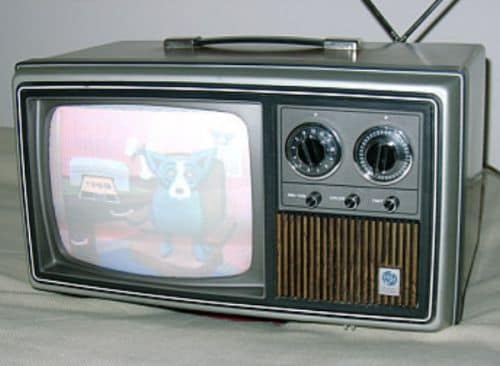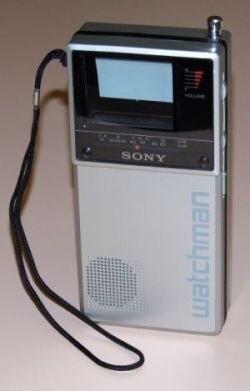The History of Television, Part 2
Posted on May 30, 2018 By Alison P
Full disclosure: We cannot possibly fit everything about the more recent evolution of the television in one article! The longer a technology exists, the greater the opportunity for it to branch off into new iterations, and the TV is a prime example. By the early 1960s, the humble Nipkow disk had been obsolete for nearly two decades, and the advent of color television brought with it a variety of opportunities to improve user experience as well as push the limits of the technology. As if television itself weren't advancing quickly enough, the emergence of the personal computer would add another driving force in the development of new screen technologies. Here's a condensed timeline of technological advancements in television for the 1960s and beyond!
1962
Nick Holonyak invents the first LED (light-emitting diode) visible to the human eye. Before this, LEDs could only emit infrared light, and this breakthrough opened the door for LEDs to be used in display-related applications.
1965
Color television gains traction. A major factor was the color transition of 1965, in which it was announced that over half of all network prime-time programming would be broadcast in color starting in fall. Color television was available but expensive - at this point in history, only 10% of US homes had a color TV.

1966
General Electric debuts the Porta-Color television set. Since earlier color televisions were incredibly heavy and large, an easily-movable color set was a major breakthrough.
1969
An estimated 650 million viewers worldwide tune in to watch the Apollo 11 moon landing, including 93% of all American households with televisions. As of this writing, it remains the most widely-viewed television broadcast of all time.
1972
HBO makes its debut as America's first cable-originated television network.
1977
J.P. Mitchell invents the first true all-LED flat-panel TV. This early version was monochrome, since blue LED lights were not invented until the early 1990s. (The inventors of the blue LED were honored with the Nobel Prize for Physics in 2014!)
1978
At least one television can be found in 98% of all US households.
1981
HDTV is demonstrated by Japan's NHK broadcasting service at the Society of Motion Picture and Television Engineers meeting in Los Angeles.

1984
The Sony Watchman FD-210 makes its debut in the US. This pocket-sized battery-powered television had a black and white display, and 65 other editions would arise before the Watchman is discontinued in 2000.
1988
The first active-matrix LCD television arrives in the form of the Sharp Crystaltron, a 3"-screen television that weighed 11 ounces and included a headphone jack.
1992
The Japanese company Fujitsu debuts the first full-color plasma display.
1997
Plasma televisions are officially on the market in the United States, most with a steep five-figure price tag.
1998
The launch of the space shuttle Discovery is the first HDTV broadcast in the United States. HDTV sets had just hit the market, with price points of $7000 and up (equivalent to over $13,000 in 2024).
1999
The first DVR systems are launched at the Consumer Electronics Show in Las Vegas.
2008
Sony debuts the world's first OLED TV (organic light-emitting diode), demonstrating deeper color levels, better brightness, and more versatile viewing angles than LED or LCD displays. It was also the world's thinnest television at 3mm thick.
2009
The United States undergoes the digital television transition, meaning the conversion of all full-power TV broadcasting in the USA from analog to digital. By the late 2000s, most television manufacturers had also phased out rear-projection television sets in favor of the flatter and more lightweight LCD, LED, and plasma TVs.
2012
The first 4K TV makes its debut, boasting a 4000-pixel resolution rather than the conventional 1080p.
2014
Fewer than twenty years after making their debut, the manufacture of plasma screens is halted in the United States. The affordability of LCD and LED TVs made them a much more popular choice.
2016
Televisions that are HDR-compatible (High Dynamic Range) offer a new level of lifelike images due to brighter brights and deeper darks.

2018
QLED TV makes its debut. These televisions use quantum-dot light-emitting diodes to create an even greater color accuracy at higher peak brightness, bringing an even greater visual experience to viewers.
2020
8K televisions become widely available to the public. The resolution of an 8K TV doubles the number of pixels of a 4k, giving it a resolution of 7680 x 4320 pixels. While most entertainment isn't presented in 8K yet, these models are capable of upscaling 4k content to 8k, giving audiences a look at the next-level picture quality that will soon become the norm.
Technology advances exponentially, and there will probably have been another television advancement made before you finish reading this article! We hope you've enjoyed this look back at the history of one of the most important innovations of all time. Television has come a long way, and we can't wait to see what's next for this ever-evolving medium.
Image Credits: Porta-Color; Watchman
